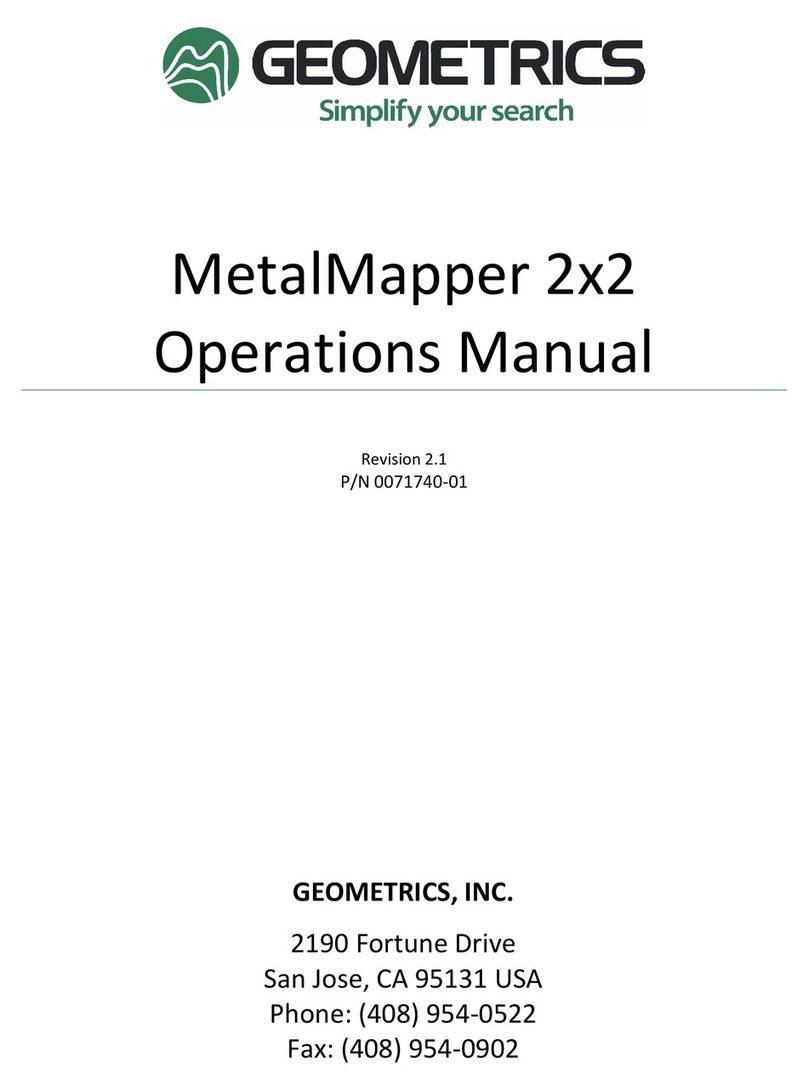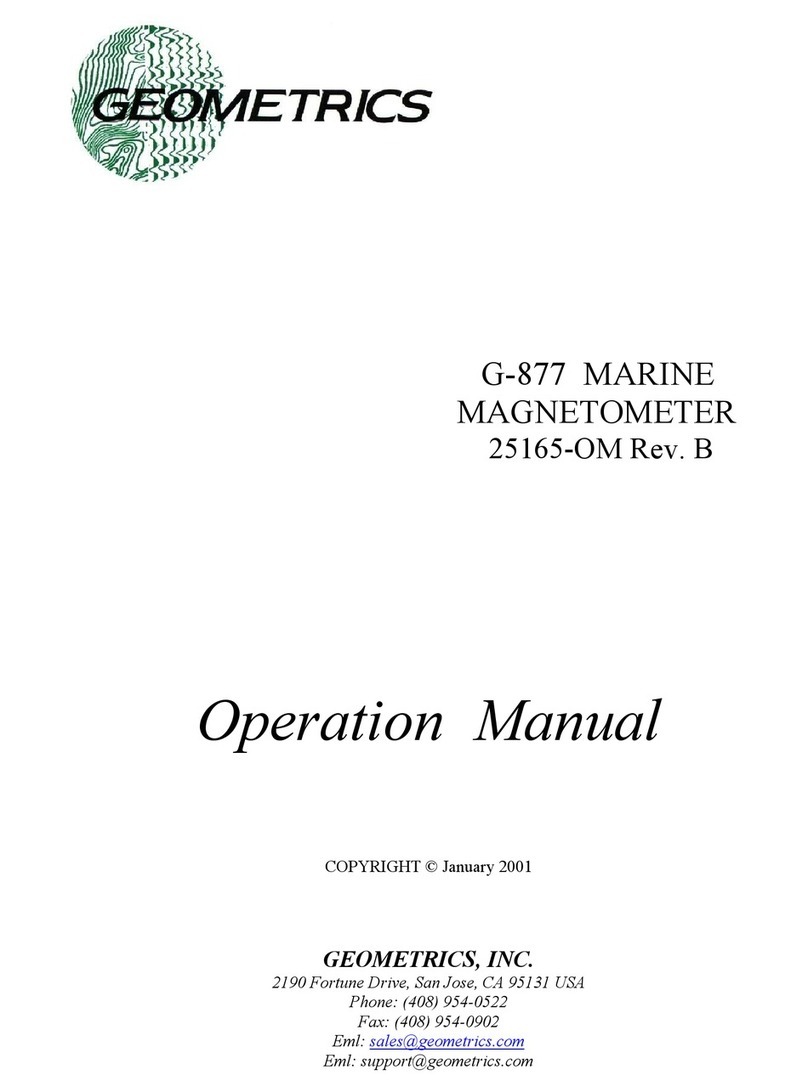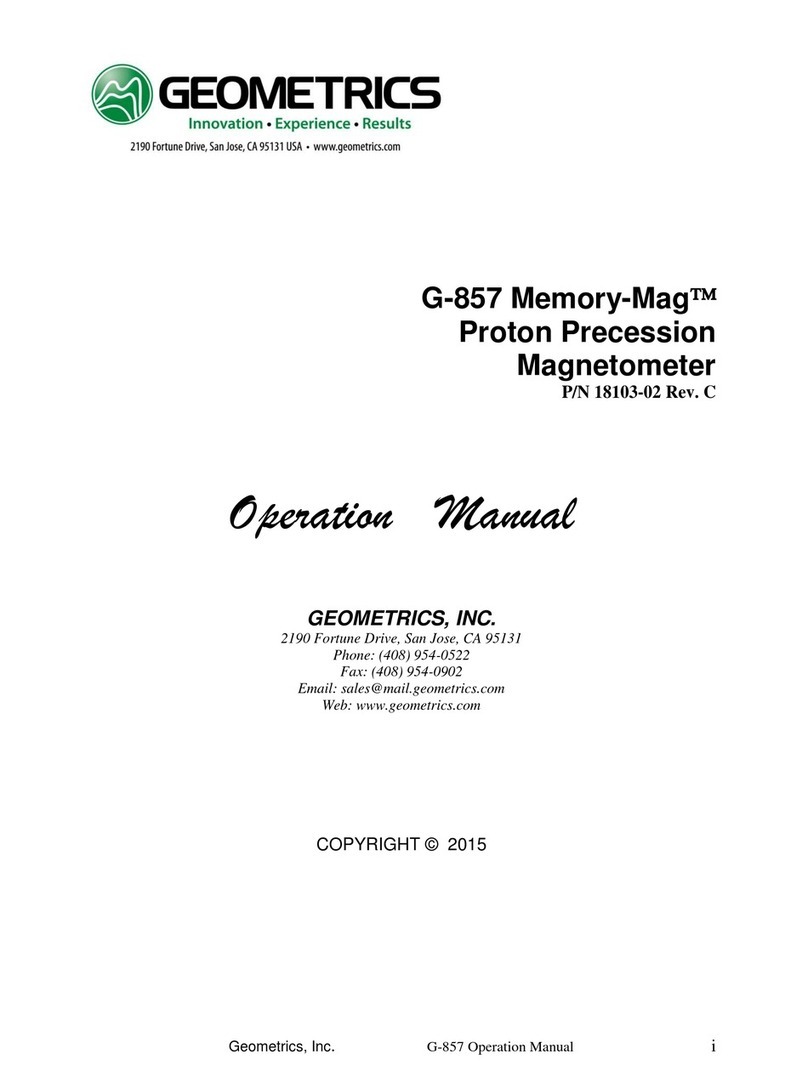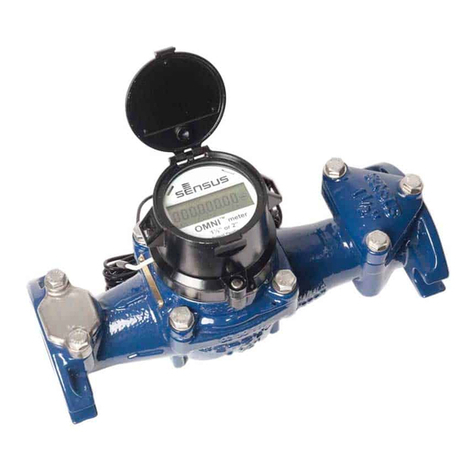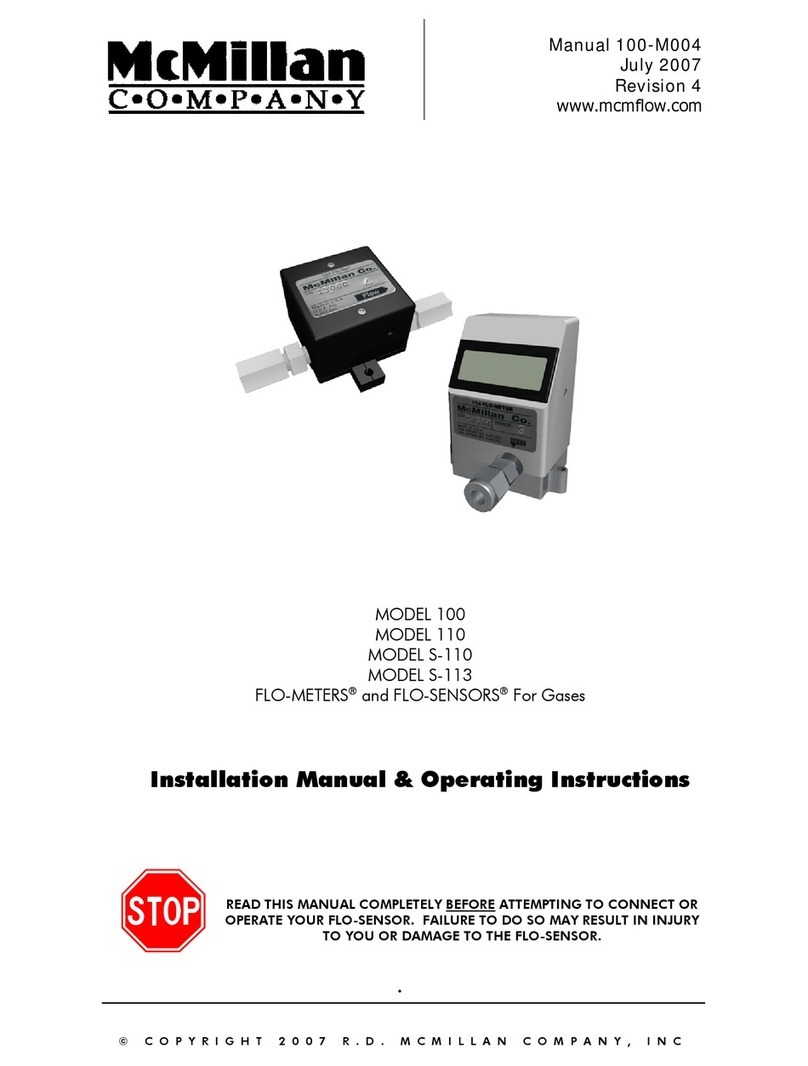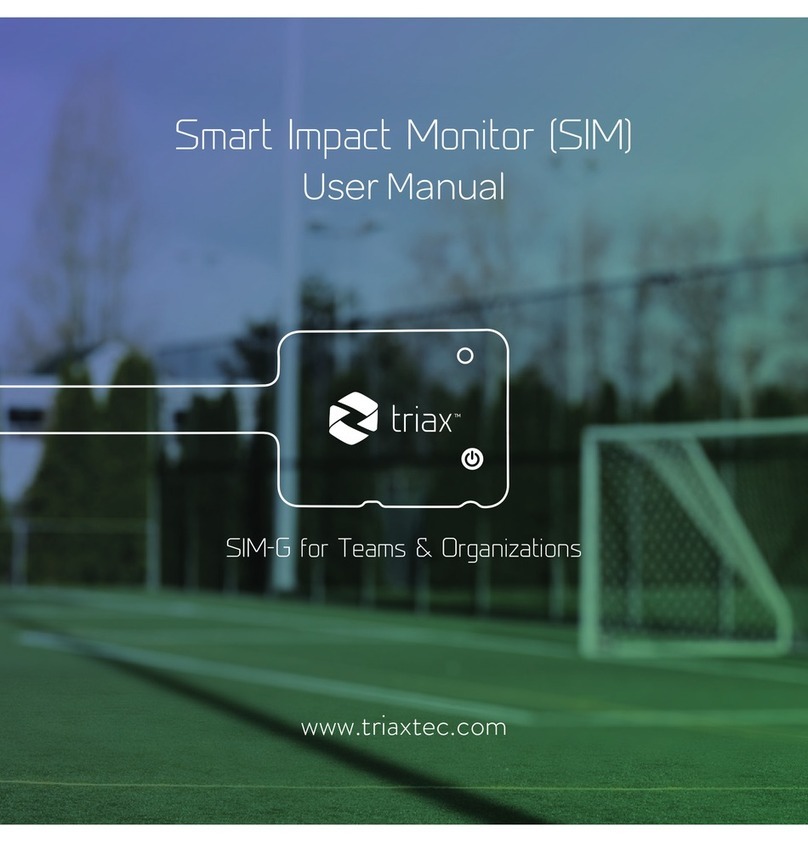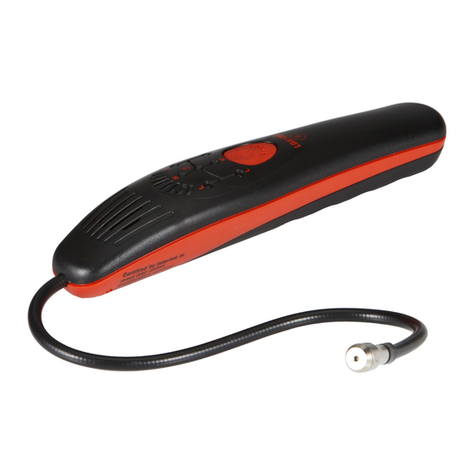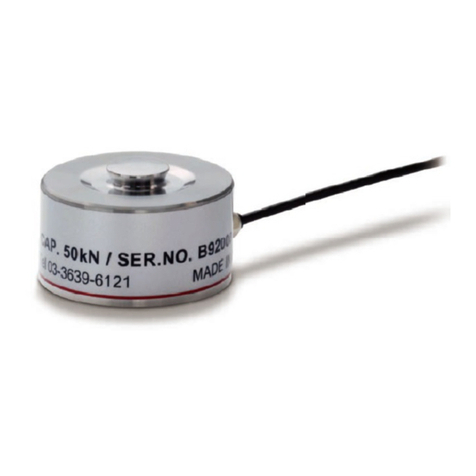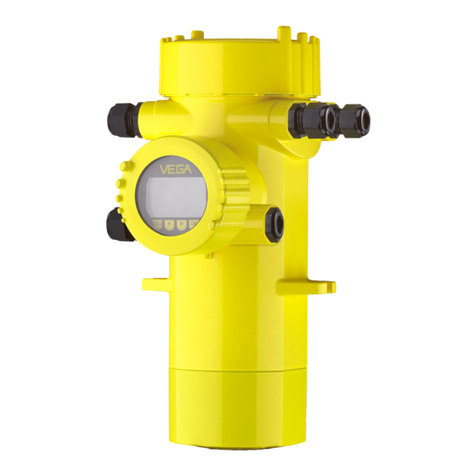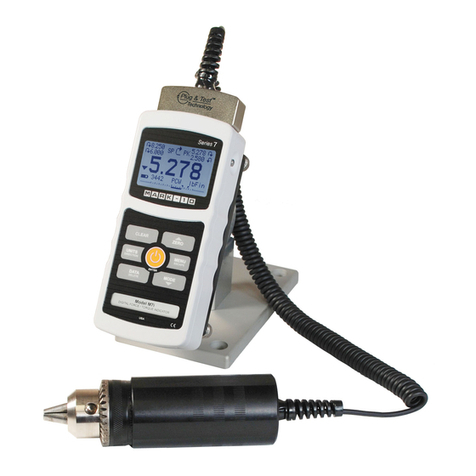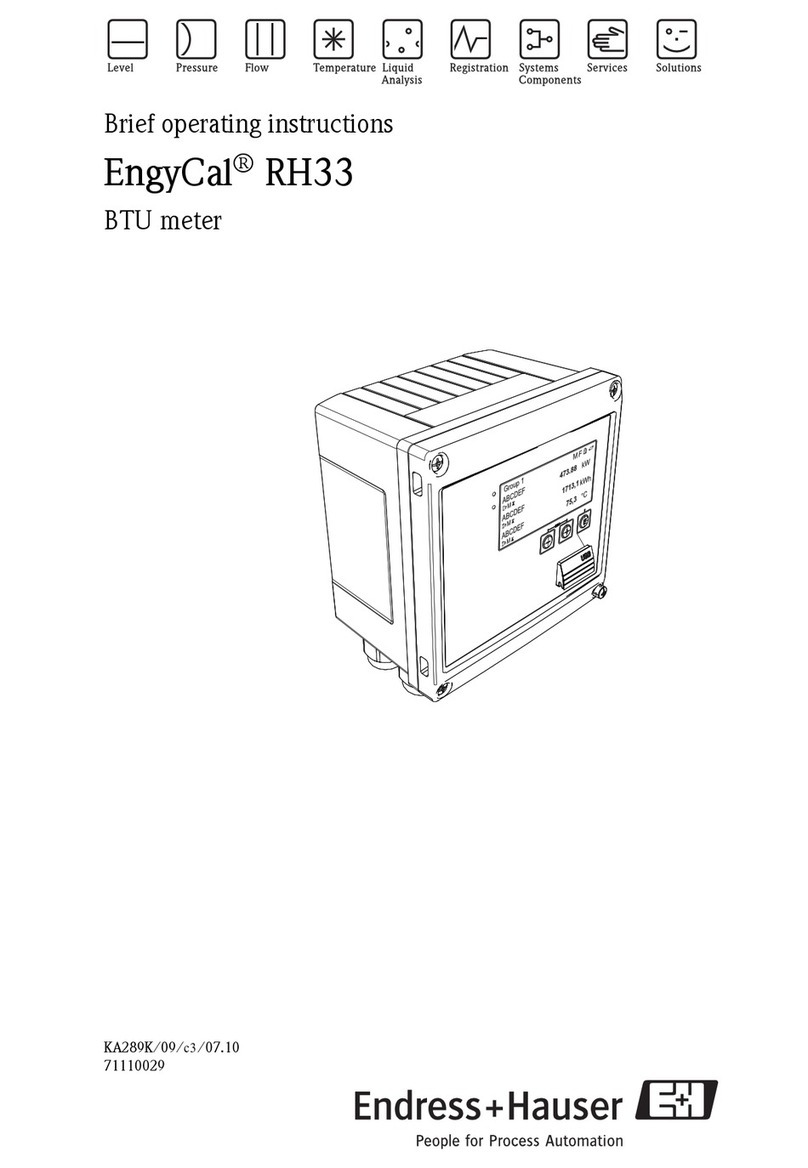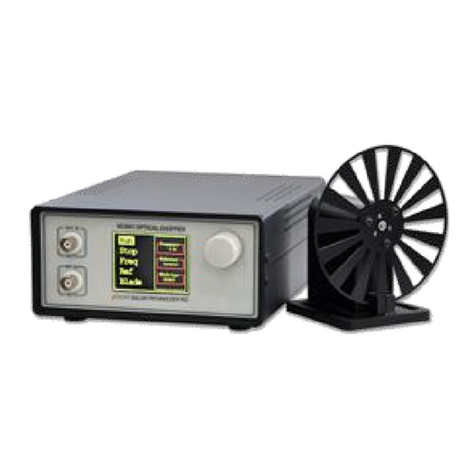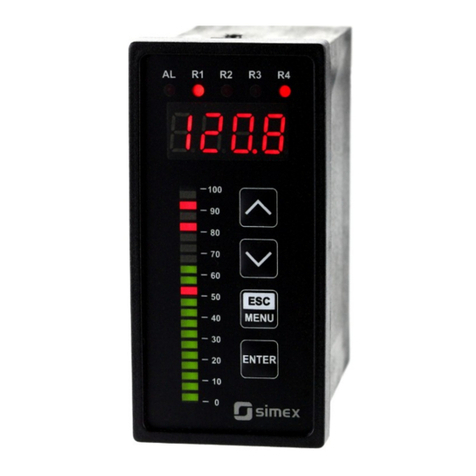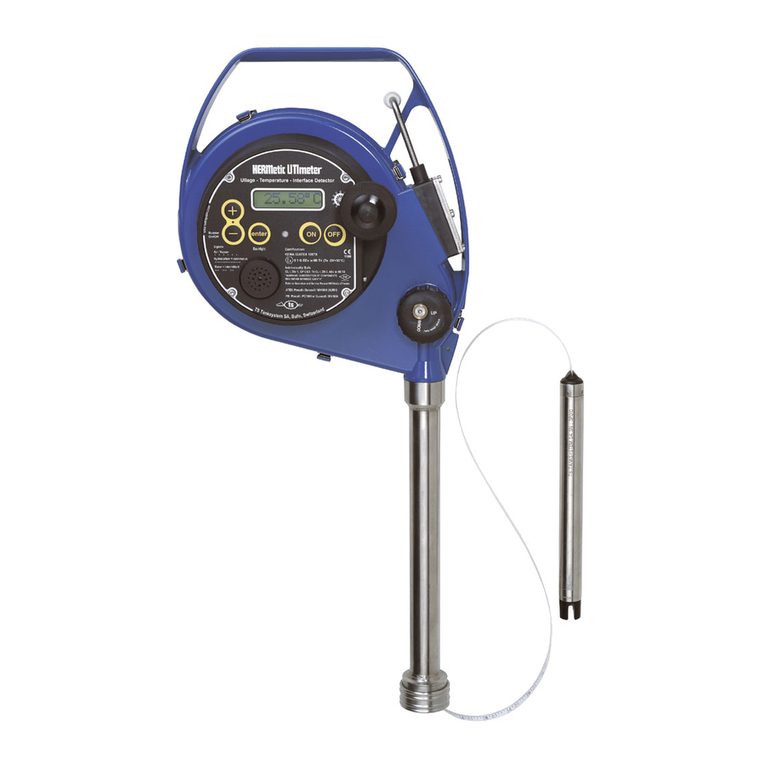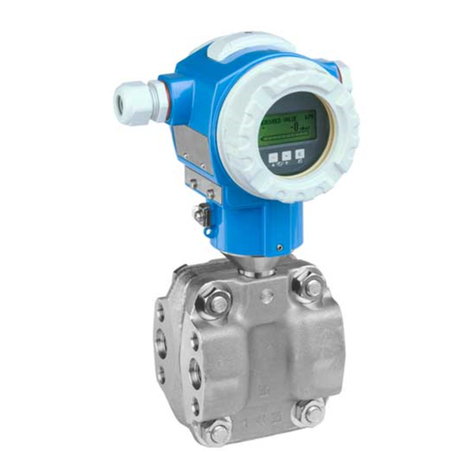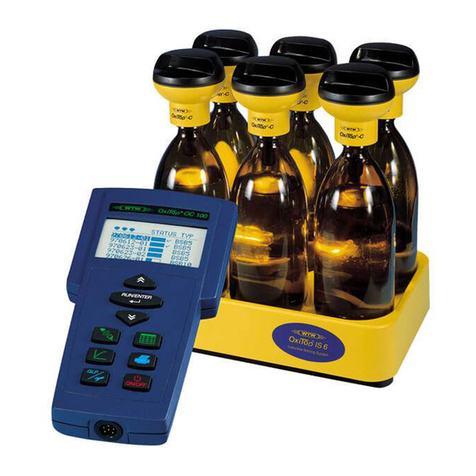Geometrics MetalMapper 2x2 User manual

MetalMapper 2x2
Operations Manual
Version- DRAFT
PN 0071740-01

1
Table of Contents:
Battery Safety
1. Introduction
2. System Overview
3. System Setup
4. Quick Start Guide
5. Sensor Function Testing
6. Static and Dynamic Modes
7. GPS and IMU Configuration
8. Data Format and Transfer
9. System Diagnostics and Troubleshooting
10. Storage and Maintenance
Appendix I: Schematics
Appendix II: Measurement Theory

2
BATTERY SAFETY
WARNING- Do not damage the rechargeable Lithium-iron phosphate batteries. A damaged
battery can cause an explosion or fire, and can result in injury or property damage.
-Do not use or charge the batteries if they appear to be damaged. Signs of damage may include
punctures, leaks, or warping.
-Do not expose batteries to fire or prolonged high temperatures.
-Do not immerse the batteries in water.
-Do not drop or puncture the batteries.
-Do not open the batteries or short-circuit the contacts.
-Discontinue using or charging the batteries if they give off strong odor or extreme heat.
-Charge the batteries only with approved chargers.
-See Chapter 10 of this manual for Shipping Information.

3
1. Introduction
This manual is a User’s Guide for the Geometrics MetalMapper 2x2 geophysical instrument used for the
detection and characterization of Unexploded Ordnance (UXO). This instrument is based on the Naval
Research Laboratory TEMTADS MP 2x2 Cart system developed over the past several years.
The system uses time domain electromagnetic (TDEM) principles to induce electrical currents in buried
metallic objects and then measures the effects of those currents in receivers on the surface. It has four
(4) co-planar transmitter coils placed in a 2 by 2 square. Each transmitter coil is approximately 35 cm x
35 cm in size. Located in the center of each transmitter coil is a 10 cm x 10cm x 10cm receiver cube,
each one containing three (3) orthogonal coils to measure the fields resulting in 12 different receiver
coils. The receiver coils are oriented in 3-dimensions. The transmitter coils are powered using a bi-polar
half duty cycle and the time decay of the subsurface currents (transients) are measured during time off
of the transmitter coils.
The MetalMapper 2x2 can be used in two collection modes, dynamic or static. Dynamic mode is
collected by pushing the cart over targets in a series of closely spaced parallel lines. Navigation features
in the software direct the user to stay on the correct path. Static mode is collected by moving the
instrument over predefined targets from an anomaly list. This anomaly list can be derived from the
results of a dynamic survey, or from another previous geophysical survey (EM61-MK2 for example).
Data is collected and stored in a HDF5 file format. This format is self-describing and easy to read and
edit with many available free software packages. This manual does not cover any post-processing of the
HDF5 files to invert the data and identify the buried metallic objects.

4
2. System Overview
The MetalMapper 2x2 is comprised of four transmitter coils approximately 35 cm x 35 cm in size.
Located in the center of each transmitter coil is a 10 cm x 10cm x 10cm receiver cube, each one
containing three (3) orthogonal coils to measure the fields resulting in 12 different receiver coils. The
receiver coils are oriented in 3-dimensions. The center-to-center distance of each receiver cube is
approximately 40 cm. The sensors are mounted on a platform that is typically 20cm above the ground
surface. A GPS and IMU (inertial measurement unit) are mounted on a tower centered above the sensor
platform. The transmitter electronics and batteries are mounted on a backpack carried by the operator.
The system is operated from a tablet computer running the ATEM software.
Figure 2-1: Cart layout showing naming convention of A, B, C, D transmitter coils and receiver cubes. X,
Y, and Z coordinates are positive in the directions shown.

5
Figure 2-2: Sensor platform with top cover removed. Sensor platform fully assembled.
2.1 Data Acquisition Electronics and Software
The data acquisition electronics and batteries are mounted on a backpack worn by one of the operators.
The electronics are connected to the cart by 3 cables: Tx Cable, Rx Cable, and GPS/IMU Cable. The
second operator controls the system from a tablet computer running the ATEM software and connected
to the electronics via an Ethernet cable. Navigation is directed by the software.

6
3. System Setup
The MetalMapper 2x2 system is packed and shipped in a collapsible plastic crate (PN MM2x2 Crate)
secured with banding. The crate dimensions are 48x44x36 with a packed weight of approx. 350 lbs.
Foam inserts are cut to protect and secure the instrument during shipment. See Chapter 10 for more
information on packing and unpacking the system from the shipping crate.
3.1 Cart Assembly
The transmitter coils (Tx) and receiver cubes (Rx) are attached to the sensor platform with plastic bolts.
These should not be removed unless instructed to do so by the project geophysicist. The Rx cubes and
Tx coils are covered by a piece of plastic attached to the sensor platform. The cover should remain
attached under most conditions. There is a cable connection facing the rear of the sensor platform.
The axles are attached to the sensor platform with the axle mounting brackets. Slide the axles through
the brackets. Attach the wheels and spacers to the axles as shown below:
Figure 3-1 Axles with wheels and spacers installed. Note optional zip ties to secure wheels.
Take care to avoid getting debris inside the wheel hubs and axles.
The cart handle will ship preassembled and just needs to be attached to the cart. The mounting
brackets have different mounting holes depending on the desired height of the handle.

7
Figure 3-2 Handle attachment
3.2 GPS/IMU Tower
The GPS and IMU are installed on a 4-legged tower which is centered above the middle of the sensor
platform. Assemble each leg of the tower as shown below:
Figure 3-3 GPS tower legs
The GPS sits on the mounting bolt which is standard 5/8”-11 threaded nylon rod. The height of the GPS
above the sensors is set using the GPS thread sheath attachment as shown below. The default height is
set in the EquipmentConfiguration.xml file. If this height is changed from factory default see chapter 7
on how to adjust the EquipmentConfiguration.xml file.

8
Figure 3-4 GPS Platform Installed. Note the tapered corners point in the direction of travel.
The IMU is mounted in a weather-resistant housing. It sits on the shelf directly below the GPS and is
centered above the sensor platform. The IMU is designed to only be installed with the correct
orientation. The 3 bolts which secure the IMU to the platform ensure that the IMU is oriented correctly.

9
Figure 3-5 IMU Installation.
3.3 Data Acquisition Electronics Backpack
The electronics which control the data acquisition are housed in a weather-resistant orange Pelican
case. The electronics housing box has 5 external connections- Rx cable, Tx cable, GPS/IMU cable, power,
and Ethernet. The housing and cable connectors are designed to be water resistant. The electronics are
cooled by the external heat sink fins. This heat sink needs to be exposed to the air and not covered by
clothing or other equipment.

10
Figure 3-6 Backpack with Electronics and Batteries Mounted
The electronics box is mounted to the backpack with top and bottom mounting brackets. The brackets
are designed to hold the box so the handle is down and heat sink is out. These brackets can be left on
for storage and shipment, but if the box needs to be removed see below:

11
Figure 3-7 Electronics box mounting brackets
3.4 Cable connections
The MetalMapper 2x2 is typically supplied with 2 complete sets of different length cables. The shorter
(9 foot) set is used with the system in walking mode, while the longer set (20 foot) is used with the
instrument in skid-steer mode and as spares. The Tx and Rx cables connect to the cable junction housing
on the rear of the cart. The cables are not reversible. Ensure that the notches on the connectors are
aligned before trying to tighten the connections.

12
Figure 3-8 Transmitter Tx and Receiver Rx Cable Connections
The GPS/IMU cable connects to the serial port outputs on the GPS and IMU. It is recommended to zip
tie these cables to the GPS towers to help with strain relief and prevent accidental disconnection during
data collection.
Figure 3-9 GPS cables connected
The electronics box is connected to the field tablet computer via the ruggedized Ethernet cable. The
Ethernet cable plugs into the top of the field tablet and the side of the electronics box. In the event the
cable is damaged, any Cat 6A or Cat 7 Ethernet cable with RJ45 connectors can be used as a
replacement. Note that Cat5e or lower will not work with the instrument as the throughput is not high
enough.

13
Figure 3-10 Side of electronics box showing Battery cable, Ethernet cable and GPS/IMU cable
3.5 Batteries
The system is powered by 2 LiFe-Ion batteries (Lithium-Iron Phosphate). The batteries are connected in
via a custom cable which allows for easy swapping and charging of the batteries. The standard battery
pack uses a 22 A-h battery for the positive 12V and 10 A-h battery for the negative 12V. The standard
battery pack will run the system for 4-6 hours under most conditions. Please contact the factory if you
require longer or lighter battery options.
The battery pack is housed in the pouch on the backpack. The battery cable connects to the electronics
box via the power cable. The fuses are standard 20A automotive fuses. If the batteries will not charge
or will not power the electronics box, check for blown fuses. In the case that fuses continue to be
burned out repeatedly please discontinue use of the battery pack and contact the factory for further
instructions. For shipping instructions please refer to Chapter 10.

14
Figure 3-11 Battery pack and cable
To charge the batteries please use the charger supplied. It will need 2 power outlets as each battery is
charged separately. Total charging time is approx. 4 hours. See instructions on charger for indicator
lights explanation.
Figure 3-12 Battery Chargers
3.6 Skid steer mode

15
The MetalMapper 2x2 can also be deployed via a vehicle-mounted skid-steer. Geometrics supplies a
skid-steer attachment made primarily of wood which is designed to hold both the MetalMapper 2x2 and
original MetalMapper. To use the MetalMapper 2x2 with the skid-steer attachment, remove the
wheels and axles from the sensor platform. Foam may need to be added to the instrument bucket to
achieve a ~20cm sensor height off the ground.
Figure 3-13 Skid Steer Attachment

16
4. Quick Start Guide
Assemble the sensor cart, electronics box, and GPS/IMU as described in Chapter 3. The electronics box
will start-up upon connecting the power. Connect the field tablet computer via the Ethernet and launch
the MetalMapper 2x2 software.
4.1 System connection
The software will connect to the electronics via Ethernet in about 20 seconds. During this time the
software will display “Waiting” in the status window in pink. There will be no position indicated nor coils
displayed in the other status windows.

17
Once the hardware and software are successfully communicating, the status window will display
“Ready” in blue.
The status window is always shown in the software. From left to right, it indicates date and time from
the computer’s clock, event log, GPS fix quality indicator, and position and IMU information.
GPS fix information is parsed out of the NMEA string. The first number displayed is the GPS quality.
Status of 2 indicates GPS position without RTK correction. Status of 4 indicates GPS position with RTK
correction. When GPS status 4 (RTK) is being collected a picture of a satellite will appear. The second
number is number of satellites used. Clicking on the GPS status window will display the entire NMEA
string that is being read by the software.
Example of GPS information with no RTK
information.

18
YPR indicates Yaw (magnetic heading), Pitch, and Roll from the IMU. The Yaw is corrected for magnetic
declination set in the EquipmentConfiguration.xml file.
4.2 System Configuration
When the software is successfully communicating with the electronics, navigate to the Project Settings
tab in the Control window.
Ambient AC Frequency: Select Powerline Frequency for noise cancellation (60 Hz in US or 50 Hz in
Europe and China)
Swath width: Width of swath during dynamic data collection
Data directory: Indicates where the collected data will be stored on the computer. Note that each
Project will create a new directory under the main directory, and each GeoID will have their own
directory within the project directory.
GPS: Ensure the GPS information is correct in the EquipmentConfiguration.xml file including baud rate.
IMU: Ensure the IMU information is correct in the EquipmentConfiguration.xml file including baud rate.

19
4.3 Parameter Setup
Other manuals for MetalMapper 2x2
1
Table of contents
Other Geometrics Measuring Instrument manuals
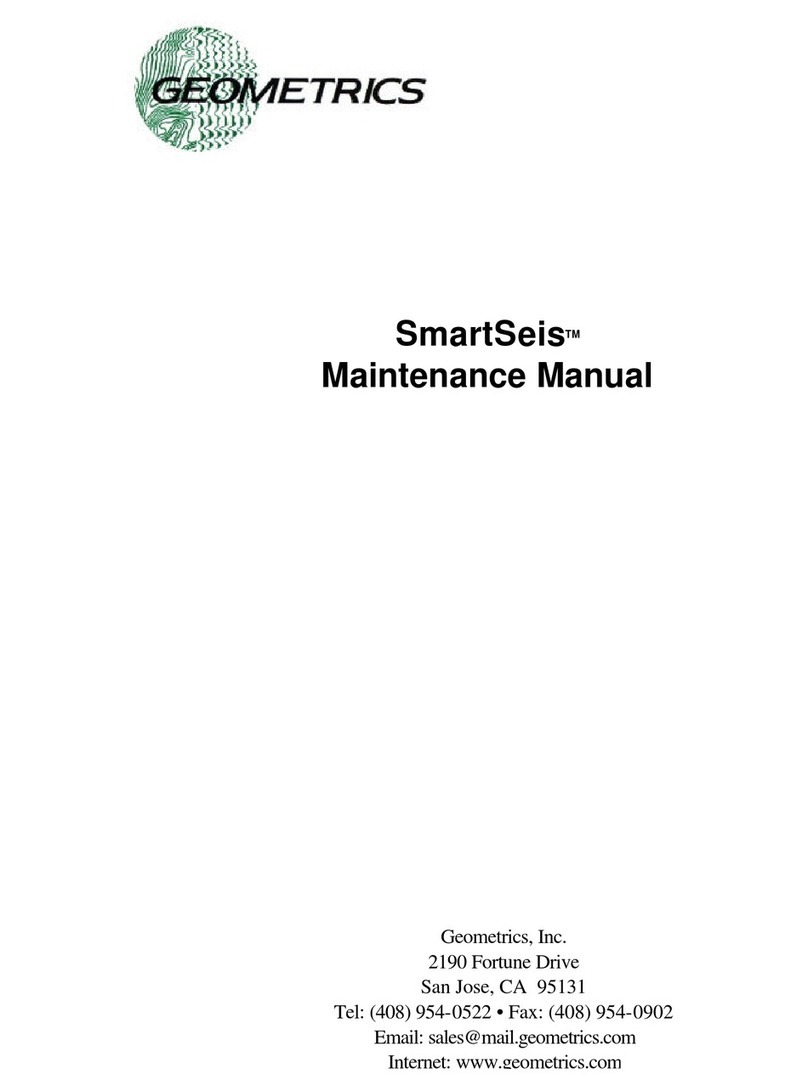
Geometrics
Geometrics SmartSeis User manual
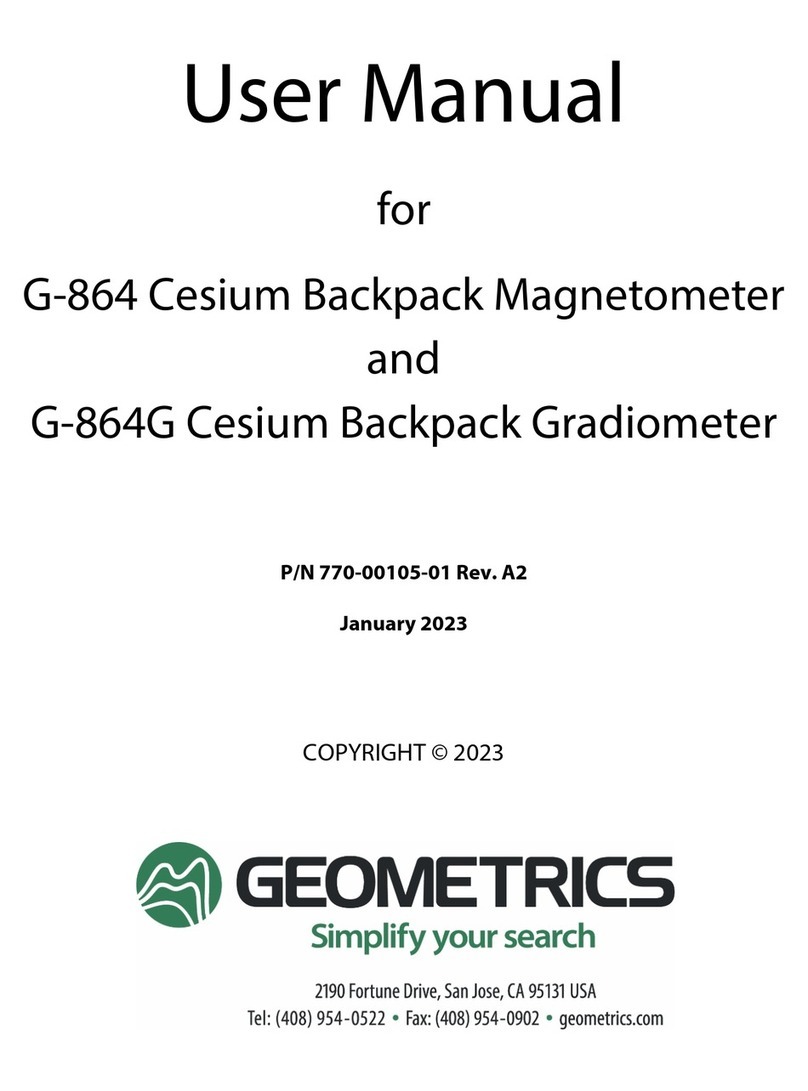
Geometrics
Geometrics G-864 User manual
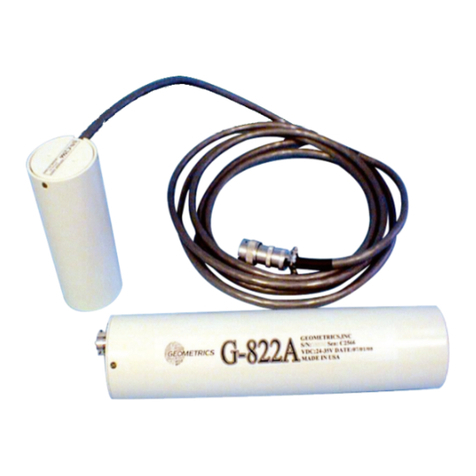
Geometrics
Geometrics G-822A User manual
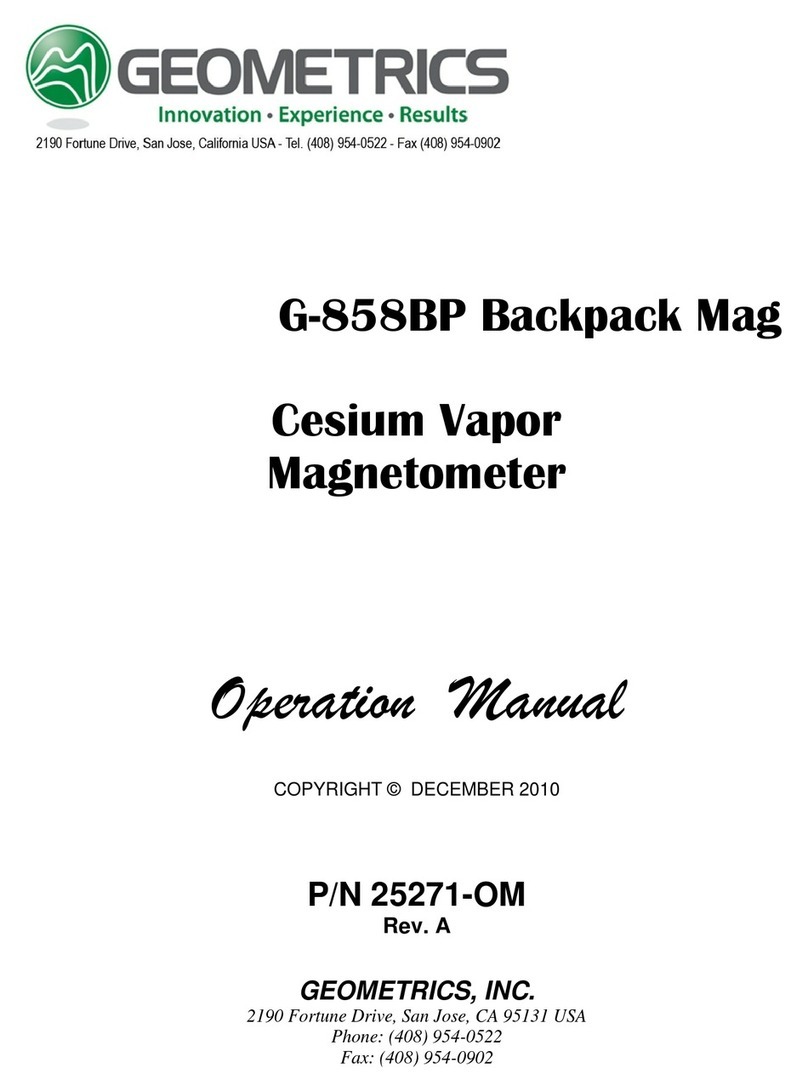
Geometrics
Geometrics G-858BP User manual
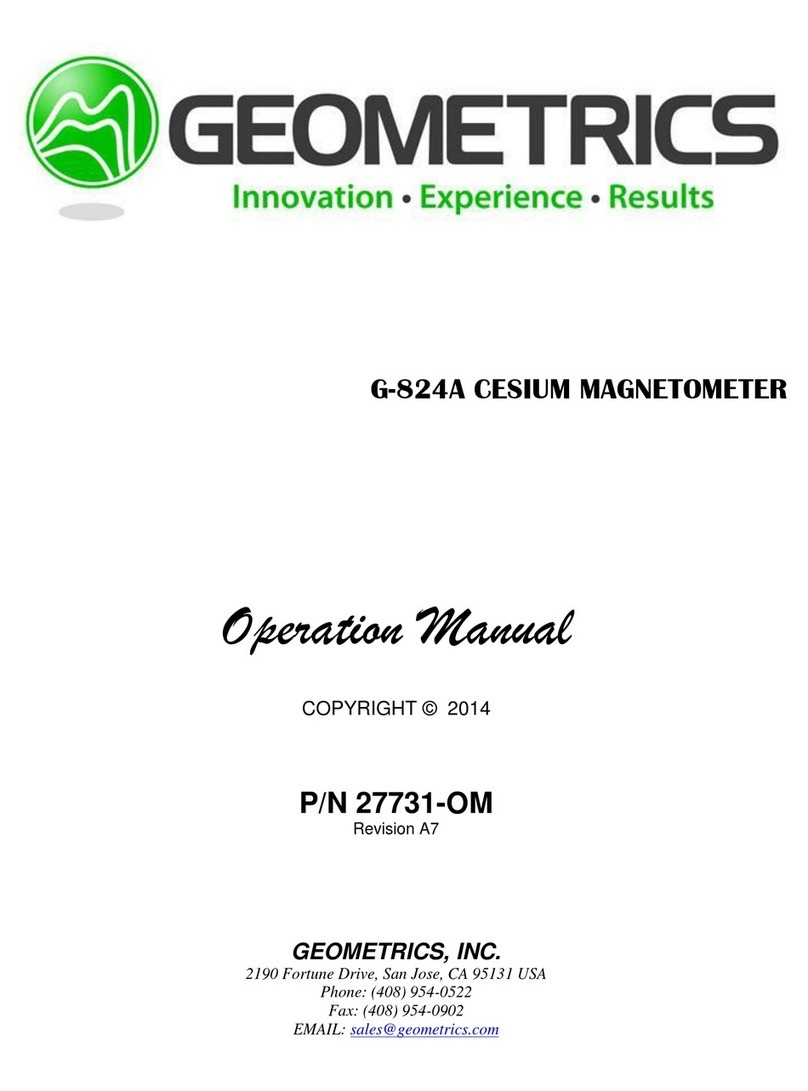
Geometrics
Geometrics G-824A User manual
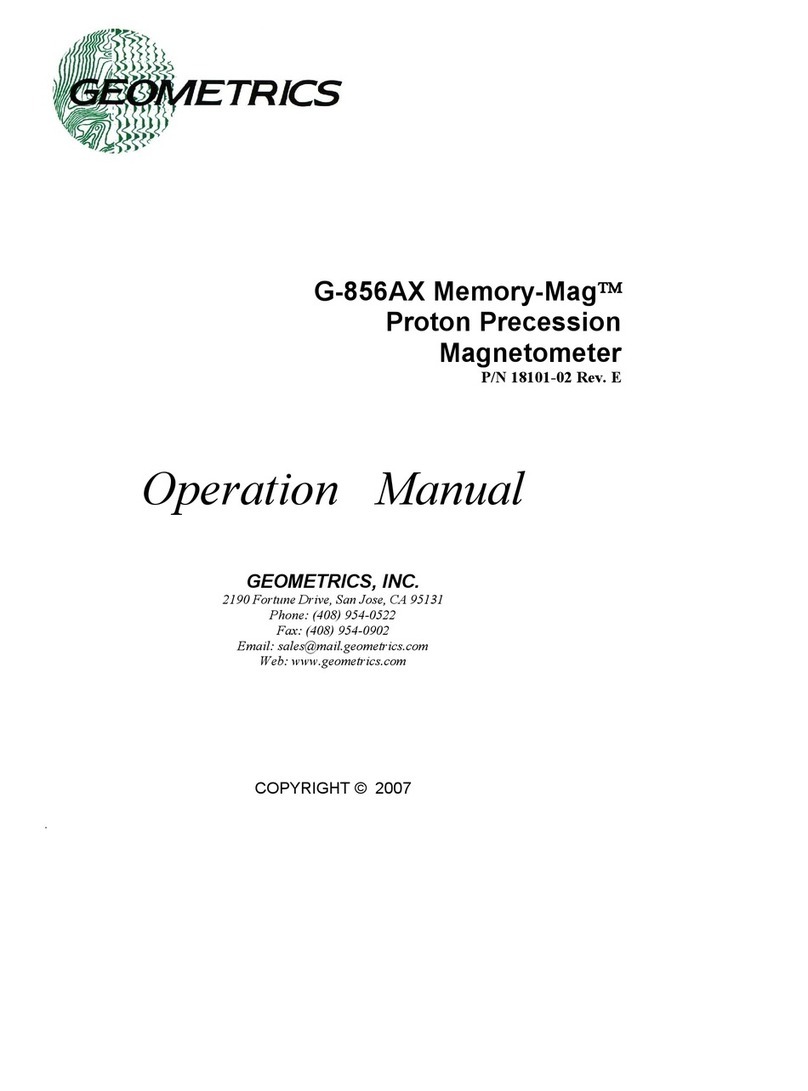
Geometrics
Geometrics Memory-Mag G-856AX User manual
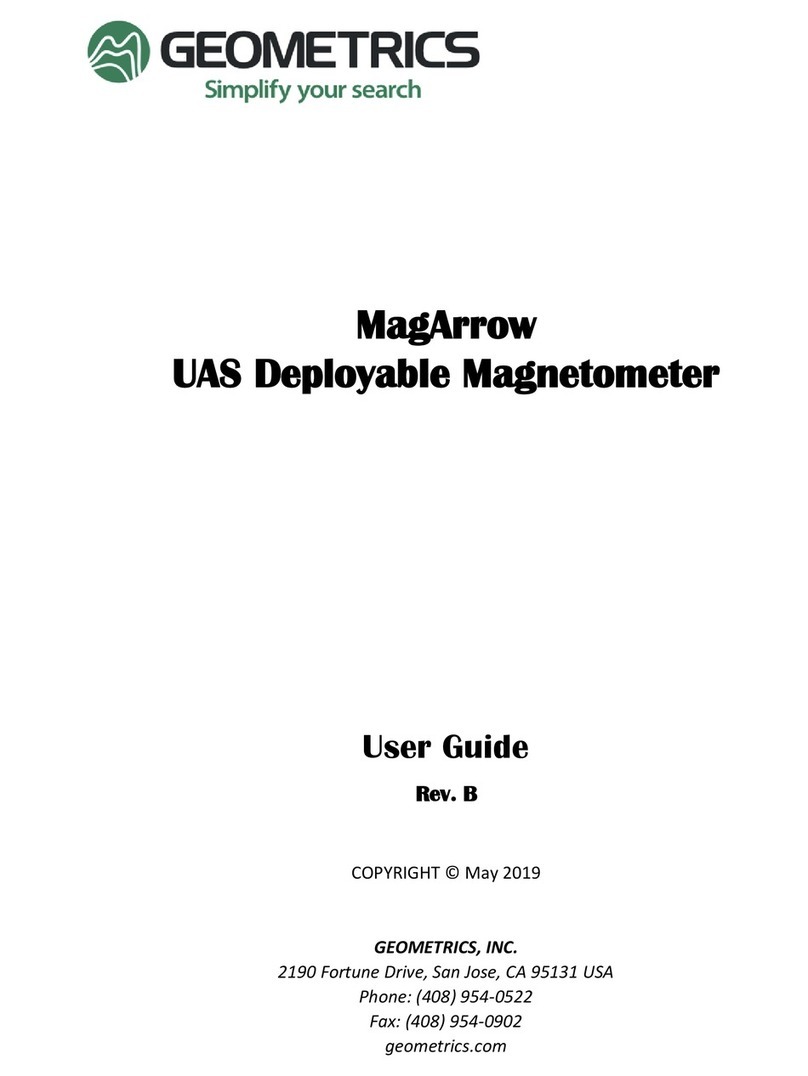
Geometrics
Geometrics MagArrow User manual

Geometrics
Geometrics GemPen User manual

Geometrics
Geometrics MagEx User manual

Geometrics
Geometrics MagArrow User manual
